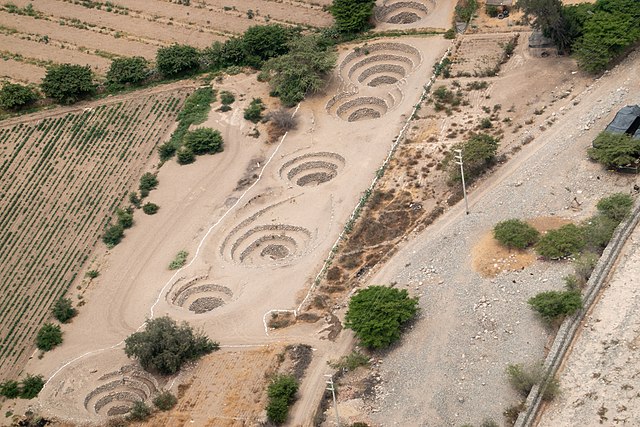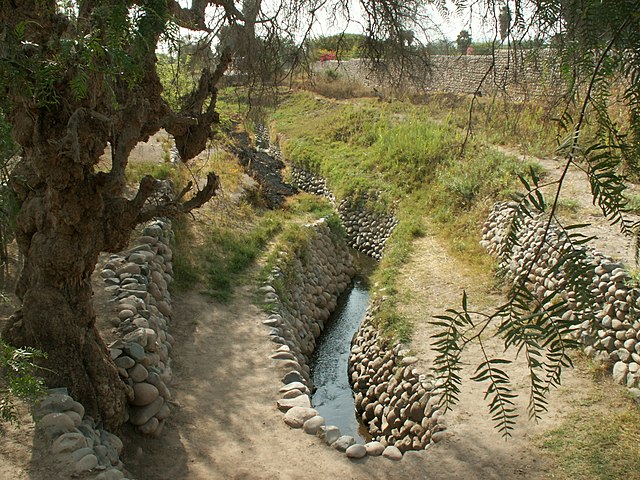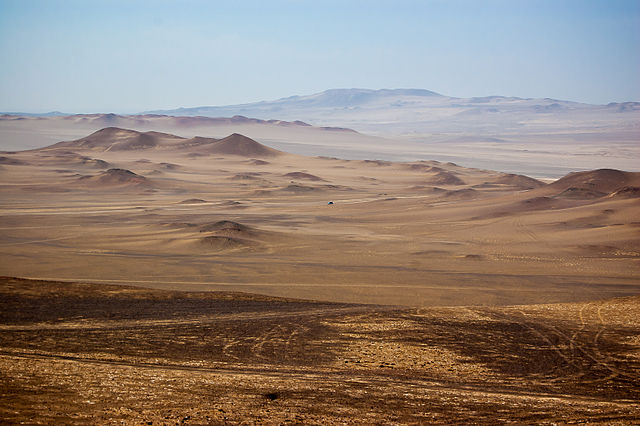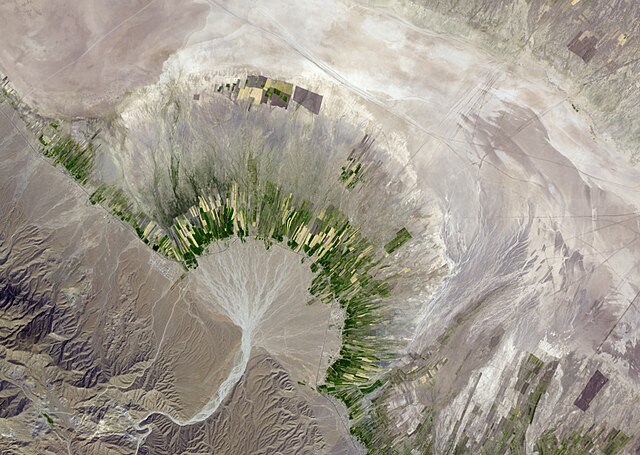Puquios are ancient systems of subterranean aqueducts which allow water to be transported over long distances in hot dry climates without loss of much of the water to evaporation. Puquios are found in the coastal deserts of southern Peru, especially in the Nazca region, and northern Chile. Forty-three puquios in the Nazca region were still in use in the early 21st century and relied upon to bring fresh water for irrigation and domestic use into desert settlements. The origin and dating of the Nazca puquios is disputed, although some archaeologists have estimated that their construction began about 500 CE by indigenous people of the Nazca culture.
Puquios
The Cantalloc puquios near Nazca, Peru. The cork-screwing funnels are for access to the underground aqueduct.
An aqueduct emerges from an underground or gallery puquios into a trench which supplies water for irrigation and domestic uses.
Except for river valleys where irrigation is possible, the desert of the Nazca Region is barren. The Pan American Highway is in the distance.
A qanat or kārīz is a system for transporting water from an aquifer or water well to the surface, through an underground aqueduct; the system originated approximately 3,000 years ago in what is now Iran. The function is essentially the same across North Africa and the Middle East but the system operates under a variety of regional names: qanat or kārīz in Iran, foggara in Algeria, khettara in Morocco, falaj in Oman and the United Arab Emirates, karez in Afghanistan and Pakistan, uyūn in Saudi Arabia, etc. The largest extant and functional qanat systems are located in Iran, Afghanistan, Oman, the oases of Turfan region of China, Algeria, and Pakistan.
Water channel of Qanats of Ghasabeh, Iran
Qanat in Kashan surfacing within the Fin Garden; it is thought to have served Iran's Sialk area for thousands of years.
A kariz surfacing in Niavaran, Tehran, currently used for watering the grounds of The National Library of Iran
Alluvial fan in southern Iran. Image from NASA's Terra satellite.








